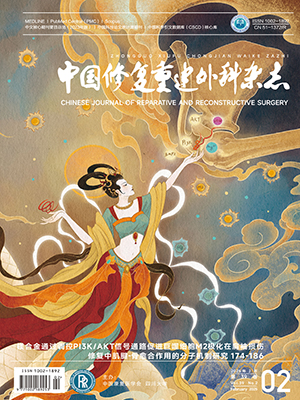Objective To compare the short-term effectiveness between dynamic neutralization system (Dynesys) and posterior lumbar interbody fusion (PLIF) in the treatment of lumbar degenerative disease. Methods The clinical data were retrospectively analyzed, from 14 patients undergoing Dynesys and 18 patients undergoing PLIF to treat lumbar degenerative disease between February 2009 and March 2011. No significant difference in gender, age, duration of disease, and lesion segments was found between 2 groups (P gt; 0.05). The visual analogue scale (VAS) score, Oswestry disability index (ODI), and radiographic results were compared between 2 groups at preoperation and last follow-up. Results Thirty-one cases were followed up 12-21 months (mean, 17 months). No internal fixation loosening, broken screws, and broken rods was found during follow-up. The mean interbody fusion time was 15 months (range, 13-19 months) in PLIF group. The VAS score and ODI were significantly improved in 2 groups at last follow-up when compared with the preoperative ones (P lt; 0.05); but there was no signficant difference between 2 groups (P gt; 0.05). Imaging assessment: the range of motion (ROM) of operated segment in PLIF group was (0.1 ± 0.4)° at last follow-up, showing significant difference when compared with preoperative ROM (7.8 ± 0.6)° (t=28.500, P=0.004); the ROM in Dynesys group (5.0 ± 1.5)° decreased, but showing no significant difference when compared with preoperative ROM (7.5 ± 0.8)° (t=0.480, P=0.113); and significant difference was found between 2 groups (t=5.260, P=0.008) at last follow-up. The ROM of adjacent segment in Dynesys group at last follow-up (7.2 ± 0.7)° decreased when compared with preoperative ROM (7.3 ± 1.8)°, but showing no significant difference (t=0.510, P=0.108); however, ROM of adjacent segment in PLIF group (8.7 ± 0.4)° increased significantly when compared with preoperative ROM (7.0 ± 1.6)°, showing signifcant difference (t=3.440, P=0.042); and there was significant difference between 2 groups (t= — 2.100, P=0.047) at last follow-up. Conclusion Dynesys and PLIF have equivalent short-term effectivness in the treatment of lumbar degenerative disease. However, the Dynesys could retain ROM of operated segment without increased ROM of the adjacent segment, which will promote the disc recovery of operated segment and prevent degeneration of adjacent segment.
Citation: YANG Bing,JIANG Tingbiao.. COMPARATIVE STUDY OF DYNAMIC NEUTRALIZATION SYSTEM AND POSTERIOR LUMBAR INTERBODY FUSION IN TREATING LUMBAR DEGENERATIVE DISEASE. Chinese Journal of Reparative and Reconstructive Surgery, 2013, 27(2): 140-144. doi: 10.7507/1002-1892.20130032 Copy
Copyright © the editorial department of Chinese Journal of Reparative and Reconstructive Surgery of West China Medical Publisher. All rights reserved




